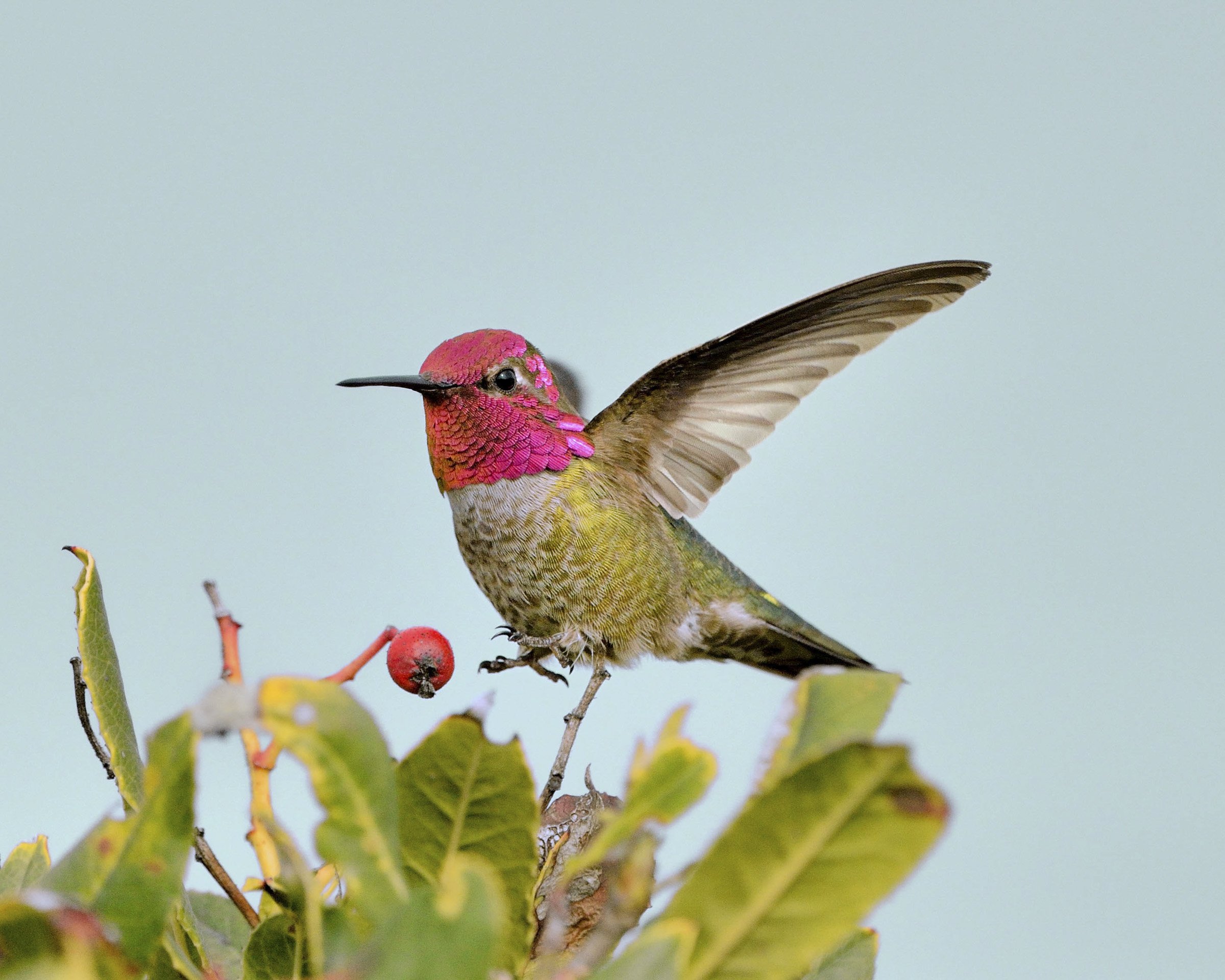Photo: Ruby-throated Hummingbird, Patrick Carney/Audubon Photography Awards
Deirdre Bryant
This summer I traveled to San Diego for the first time and a highlight of the trip was the San Diego Zoo. The park’s thoughtful landscaping serves the animal exhibits but also attracts wild visitors. San Diego’s mild climate allows the park to grow a much larger variety of plants than anywhere else in the country. These include cacti/succulents, carnivorous plants, grasses, herbs, ferns, cycads, trees, shrubs, vines, and flowers, creating an optimal habitat for a variety of hummingbird species.
Hummingbirds were everywhere in San Diego, especially at the zoo. The day of my visit I spotted the Anna's Hummingbird (Calypte anna), Allen’s Hummingbird (Selasphorus sasin), and Rufous Hummingbird (Selasphorus rufus), but at least 8 species can be found in California. The male Anna’s is identified by its beautiful iridescent pink head feathers, while the female Anna’s has a red throat patch. The male Allen’s Hummingbird has brownish, greenish feathers on its back, with a brilliant reddish-orange throat and orange belly. Male Rufous hummingbirds are orange on the back, as well, unlike the Allen’s. Both the Allen’s and Rufous females have brown feathers with shimmering green feathers mixed in, with an orange spot on the throat, and are difficult to tell apart in the field.
Anna’s Hummingbird, Mike Anderson/Great Backyard Bird Count
In Northern Virginia it is very difficult to find a hummingbird species other than the Ruby-throated Hummingbird (Archilochus colubris). It has the largest breeding range of any in North America and is the most common hummingbird east of the Mississippi River. The male has a dazzling crimson-colored throat, thinly bordered with black feathers on the upper margin. Its tail is forked, black with a muted violet sheen. The female’s back is metallic green black and brown. Its throat is white with dusty streaks, and its tail is short, fan-shaped, and mostly black with white tips.
Ruby-throated Hummingbird, Patrick Carney/Audubon Photography Awards
Before San Diego, I had only seen hummingbirds in the wild a few times. They’re elusive when they aren't feeding. In fact, when I catch one flying past in my distant, peripheral vision I sometimes assume it’s just a horsefly or large bee. One tip I use now when determining whether what I’m seeing in the distance is a large insect or a hummingbird is to notice how it flies. Sure, the hovering might be a clue, but there are large bees that hover, too, and from a distance it may be difficult to gauge the size. Poor lighting may also make identification difficult, even if the feathers are iridescent. A profile view also helps, but only if the bird stays in view long enough for a good look. See also this month’s Observations from Meadowood on hummingbird moths.
The trick I use is to watch for “graceful and purposeful movement.” It’s a little difficult to explain because some bees move with purpose, too (carpenter bees), but hummingbirds have better control of how they move in a 3-dimensional space. When flying, they’ll quickly rotate their wings in a figure-8 pattern. The movement pushes air backward, forward, and downward, creating lift force on both forward and back strokes of the wing. Observing the body swivel mid-flight is also helpful even if all that’s visible is a silhouette.
Ruby-throated Hummingbird, Laura Zamfiresccu/Audubon Photography Awards
The Ruby-throated Hummingbirds in Northern Virginia migrate to Southern Mexico and Central America later this year, because their breeding season is coming to a close. Male hummingbirds don’t stick around too long after mating, so females are more common right now. While they’re still here, try watching for “graceful and purposeful movement” to find them in grasslands, meadows and forest edges instead of at the feeder. Looking for movement also should allow spotting them from afar in the trees or near shrubs, even without binoculars.




